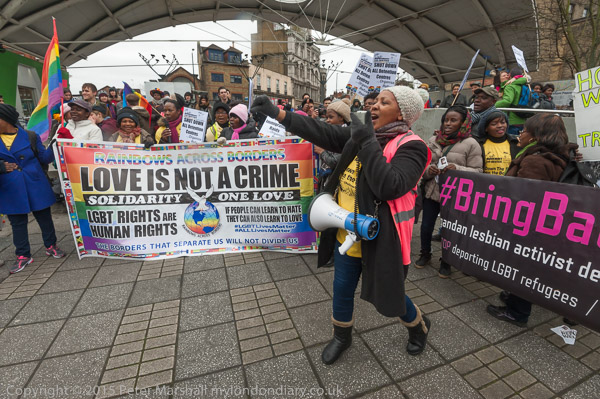
I began photographing the annual Pride march in London in 1993, when it was still a protest for gay rights as well as a highly charged personal statement by some of those taking part, coming out to show the world that they were indeed proud and unashamed of being gay. For many it was something that only their friends knew, and some would say to me ‘I hope my mother doesn’t see this‘ when I took their pictures – though others had mothers and fathers marching with them. You can see some pictures at Ten Years of Pride, a show which was part of ‘Queer is Here‘ at the Museum of London and touring in 2006.
Now, as I’ve often written, Pride is a parade, a hugely commercially sponsored event watched by crowds for its spectacle, in some respects still a celebration of the gay community and its acceptance in this country.
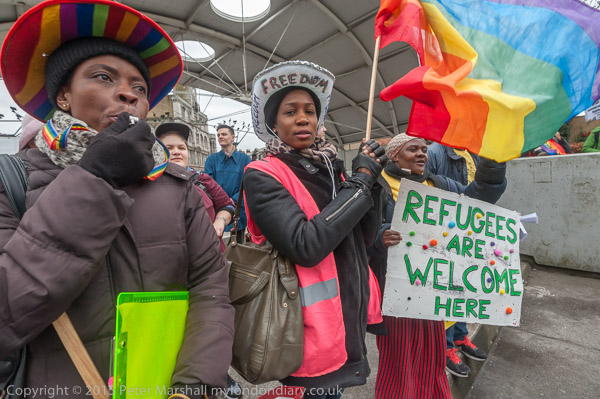
Peckham Pride was a deliberate attempt by Lesbians and Gays Support the Migrants (LGSMigrants) and Movement for Justice to put back ‘ the politics of resistance‘ into Pride, to stand up for those in this country who are still under attack because of ‘discrimination over the colour of our passports, the colour of our skin, our gender, our sexuality or our ability.’
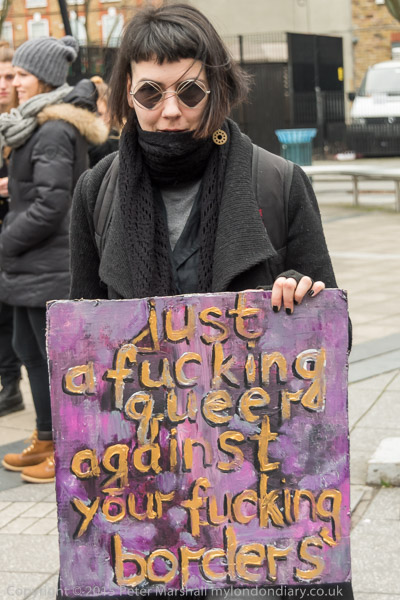
I was introduced to Peckham and my wanderings around South London by a remarkable book, ‘London South of the River‘ by Sam Price Myers, though it doesn’t have a great deal to say about Peckham itself, though mentioning the busy high street of Rye Lane as well as its three great cemeteries. Unfortunately the book, published in 1949 is now rare though there is a copy in Lambeth’s Archives, still apparently open although the public library in which they were housed is being turned into a gym.
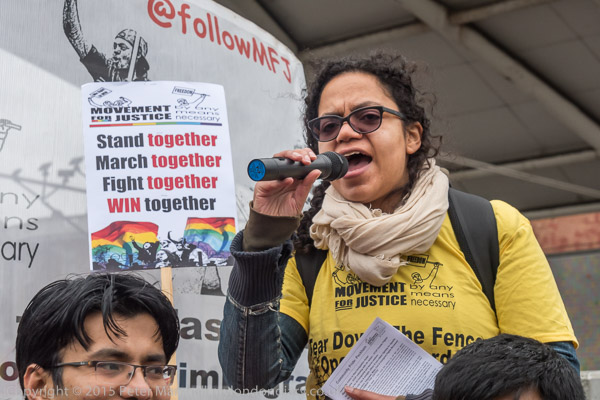
You can see a few of fine wood engravings from the book (reprodcued from a copy at Reading University) on line, but unfortunately Rachel Reckitt (1908-1995) didn’t illustrate Rye Lane, though in the book there is a splendid image of Nunhead Station, which unfortunately I can’t reproduce on copyright grounds. It’s a book which deserves to be reprinted in facsimile, largely for her work.
Since 1949 Rye Lane has changed a little, though it is still at times filled with ‘an unbroken block of humanity‘, a ‘slowly-moving mass (that) not only fills the street but viscously oozes through the large and small shops that line it‘, though now many of these people and shops are now owned by members of London’s Nigerian and Ghanaian communities and the others that make London a multicultural city. But increasingly the estate agents are moving in and threatening the area where property – in London terms – remains relatively cheap.
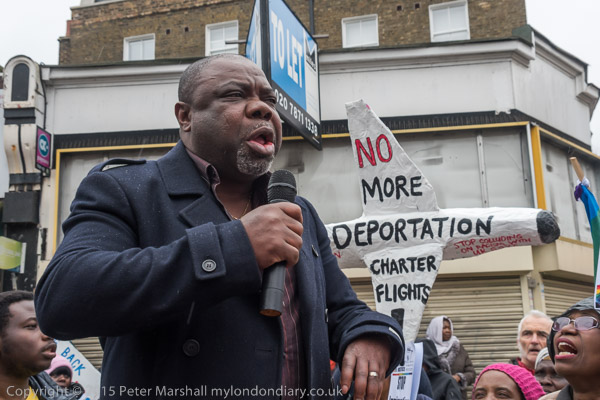
Its crowded street and small businesses have made Peckham a convenient target for anti-immigration raids, racist go-home vans, and street harassment by the Home Office. As I wrote in Peckham Pride in My London Diary, they have carried out ‘racist raids leading to brutal deportations on cattle-like charter flights to Nigeria and Ghana, but (it) is also a focus of growing popular resistance on the streets to these illegal and immoral activities.’
It wasn’t an event on the scale of London’s Pride parade, with hundreds rather than thousands taking part, but was in some respects more interesting, with a number of pseeches before the start and also at a stopping point on Rye Lane itself. Unfortunately I had to leave to catch a train to Hull before the performances at the end of the march at the Bussey Building, a late nineteeth century cricket bat factory which is now houses ‘creative arts, artists studios, theatre groups, live music venues, fitness studios, and faith groups‘. It’s part of a large former industrial estate which will almost certainly before too long succumb to redevelopment as unaffordable luxury housing. It’s a place I visited briefly a few months earlier when ‘Walking the Coal Line‘.
______________________________________________________
There are no adverts on this site and it receives no sponsorship, and I like to keep it that way. But it does take a considerable amount of my time and thought, and if you enjoy reading it, the occasional small donation – perhaps the cost of a beer – would be appreciated.
My London Diary : Buildings of London : River Lea/Lee Valley : London’s Industrial Heritage
All photographs on this and my other sites, unless otherwise stated, are taken by and copyright of Peter Marshall, and are available for reproduction or can be bought as prints.
To order prints or reproduce images
________________________________________________________